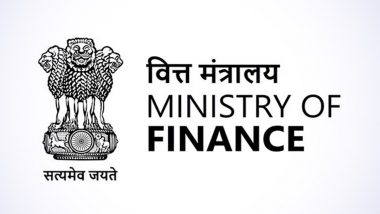New Delhi [India], Oct 07 (ANI): A recent study has noted that India's corporate bond market, which contributes 17 per cent to the country's Gross Domestic Product(GDP) and is highly concentrated in the AAA rated bonds, is expected to change once the Insolvency and Bankruptcy Code (IBC) brings about successful resolution of stressed assets in a time-bound manner.
As per a joint study conducted by ASSOCHAM and CRISIL, reduction in the timeline for resolution of stressed assets under the IBC would not only enhance confidence of investors but would also make them go in for bonds less than AAA rating.
Presently, about 90 per cent of trading is restricted to AAA and AA rated categories. "With greater certainty of outcome and expectations of a faster resolution because of the IBC, the interest of both domestic and foreign investors in lower-rated paper will increase over time," the study noted.
Countries such as Brazil, Russia, China and the United Kingdom had taken steps to reform the bankruptcy laws which, along with other government-specific macroeconomic structural reforms, led to significant growth in the corporate bond markets in their respective financial markets.
The Reserve Bank of India (RBI) has implemented norms for limiting individual/group exposures in banks, encouraging large corporate borrowers to access the bond markets for funding requirements. This, along with the Code, will provide a boost to the Indian bond market, the study highlighted.
With regards to the role of Asset Reconstruction Companies (ARCs), the ASSOCHAM-CRISIL study said a structural shift is expected in the Indian stressed-asset market that would lead to a reset of business models in the ARC industry.
It further noted that ARCs may partner with large funds for increasing their capital base and, hence, may go for large acquisitions. At present, despite deceleration in growth, Asset Under Management (AUM) of ARCs is expected to reach Rs 1 lakh crore by June next year.
The study noted that effective implementation of the IBC can help improve the recovery rate of stressed assets further, as it has been proven internationally. "So far, recoveries by ARCs have remained below expectations as resolutions were lengthy. Smaller assets (debt up to Rs 100 crore) typically have a shorter resolution time frame and better recovery rate compared with larger ones."
"While the sale of assets or settlements is the most preferred and successful strategy for small accounts, reconstruction was the most preferred strategy for large accounts. But large accounts, during reconstruction, could take a legal recourse, delaying the recovery proceedings. This would remain a challenge for an effective resolution within the proposed timeline," the study said.
In the long run, effective implementation of the IBC will help in preserving the value of asset and faster resolution. That, in turn, means ARCs will be able to churn capital faster and enhance returns, it added.
The access of ARCs to capital sources is also critical, as their collective net worth is just about Rs 4,500 crore, according to CRISIL estimates as on March 31, 2017. Furthermore, they have a limited room to tackle the present level of NPAs. The new Code, along with a 100 per cent foreign direct investment (FDI) in ARCs through the automatic route is expected to boost capital flows.
With the recent RBI proposal to increase net-owned funds to Rs 100 crore for ARCs, a faster resolution of release of capital becomes more important, the committee noted.
"For entrepreneurs or start-ups, winding up a business requires multiple approvals and leads to a substantial delay in honouring the dues of creditors. The Code will provide some respite, as a start-up firm that gets insolvent can be wound up on a fast-track basis within 90 days. Thus, creditor interest can be protected and capital can be reallocated to efficient businesses. Also, this will help entrepreneurs initiate insolvency proceedings voluntarily. Over time, the Code will help promote entrepreneurship and increase the role of professionals from various fields such as law, accountancy and finance."
While a number of steps have been taken for the implementation of the IBC, challenges persist at multiple levels, including infrastructure issues, inter-creditor conflicts and limited development of the secondary market, the ASSOCHAM-CRISIL study highlighted. (ANI)
(This is an unedited and auto-generated story from Syndicated News feed, LatestLY Staff may not have modified or edited the content body)













 Quickly
Quickly





















